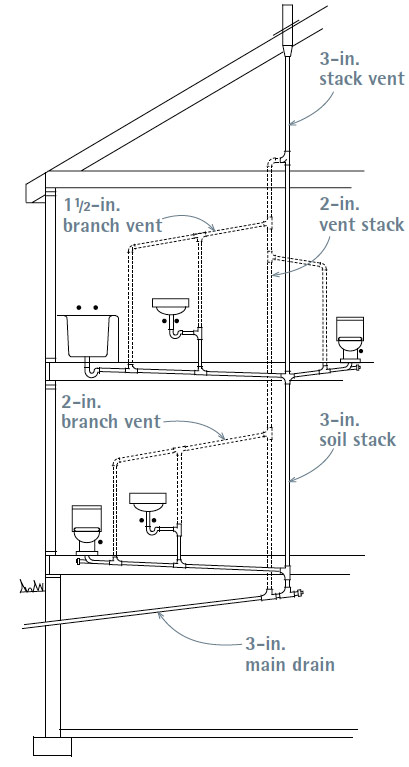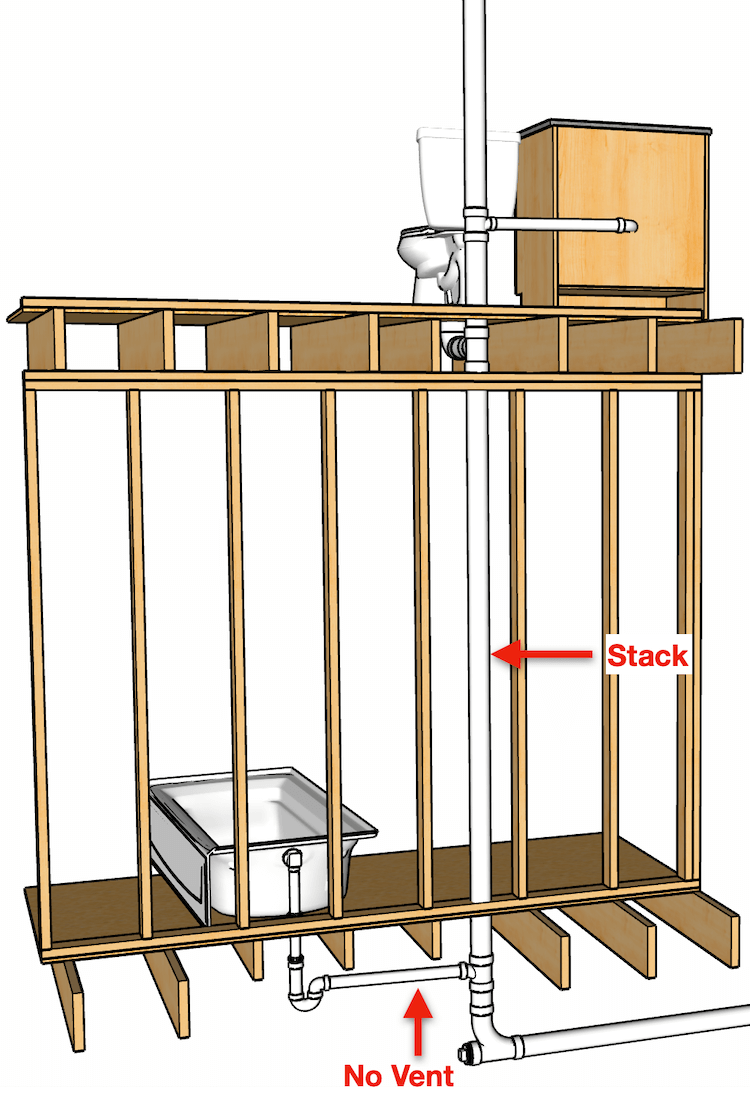Important Benefits for Adequate Ventilation in Plumbing Systems
Important Benefits for Adequate Ventilation in Plumbing Systems
Blog Article
This great article down the page relating to The Upsides of Proper Ventilation in Plumbing Design is fairly insightful. You should give it a look.

Proper air flow in pipes systems is typically ignored, yet it is important for preserving the functionality and safety of your home's pipes. Air flow assists regulate atmospheric pressure, prevent the buildup of unsafe gases, and make sure the effective removal of waste. In this overview, we will discover the importance of correct pipes ventilation, just how it functions, and the advantages it offers your plumbing system.
Recognizing Air Flow in Plumbing
Ventilation in plumbing refers to the network of pipes that allow air to stream with the drainage system. These vents offer numerous objectives, including managing air pressure within the pipes, avoiding sewer gases from getting in the home, and aiding in the smooth circulation of wastewater.
Exactly How Ventilation Functions in Plumbing Solutions
Air Pressure Law
Appropriate air flow preserves balanced air pressure within the pipes system. When water flows with pipelines, it displaces air. Without sufficient ventilation, this variation can create unfavorable stress, causing slow drains or siphoning of water from traps, which can create undesirable odors to leak into the home.
Avoiding Sewage System Gas Accumulation
One of one of the most important functions of plumbing vents is to avoid drain gases, such as methane and hydrogen sulfide, from gathering within the home. These gases can posture major health risks and are very flammable. Vent pipelines enable these gases to escape securely outside.
Aiding in Waste Elimination
Air flow helps in the effective removal of wastewater by preventing airlocks in the water drainage system. When air can stream easily through the vents, it permits water and waste to stream efficiently through the pipelines, lowering the danger of clogs and back-ups.
Sorts Of Plumbing Vents
Key Stack Vent
The primary stack air vent, additionally referred to as the air vent stack, is the main air vent in a plumbing system. It prolongs from the primary drainpipe align through the roof covering, enabling gases to leave and fresh air to get in the system.
Branch Vent
Branch vents link to the main pile vent and offer individual fixtures, such as sinks, bathrooms, and showers. These vents make certain that each component has ample air flow to function correctly.
Air Admission Shutoff (AAV).
An Air Admission Shutoff (AAV) is a one-way shutoff that permits air to enter the plumbing system without the requirement for a typical air vent pipe extending via the roofing. AAVs are typically used in improvements or areas where installing a standard air vent is impractical.
Indicators of Poor Ventilation in Pipes.
Slow Draining Fixtures.
If your sinks, tubs, or toilets are draining pipes gradually, maybe an indication of bad ventilation. Insufficient air flow can create a vacuum result, making it hard for water to drain appropriately.
Gurgling Appears.
Gurgling audios coming from drains are usually an outcome of air being drawn with water traps because of unfavorable pressure in the pipes. This is a clear sign of not enough air flow.
Undesirable Odors.
Sewage system odors inside your home are a warning that your pipes system is not correctly aerated. This might mean that sewage system gases are not being properly vented outside, causing potentially dangerous problems.
Typical Air Flow Blunders.
Insufficient Vent Sizing.
Using undersized vent pipes can cause bad air flow and stress inequalities in the system. It's vital to make use of vents that meet the details requirements of your plumbing system.
Improper Vent Positioning.
Positioning vents also far from the fixtures they offer can minimize their effectiveness. Appropriate placement makes sure that air can move openly and efficiently through the system.
Disregarding Code Requirements.
Building codes supply specific guidelines for pipes ventilation. Overlooking these codes can cause a system that stops working to work properly and may lead to pricey repairs or health hazards.
Advantages of Appropriate Ventilation.
Improved System Effectiveness.
Appropriately aerated pipes systems run more successfully, with fewer clogs, faster draining pipes, and less strain on the pipelines. This effectiveness extends the lifespan of the plumbing system.
Improved Air Quality.
By preventing drain gases from entering your home, correct ventilation contributes to much better interior air high quality, making your living environment healthier and a lot more comfortable.
Protecting Against Water Damage.
Appropriate air flow assists prevent water from being siphoned out of traps, which can bring about sewer gases getting in the home and triggering water damages gradually.
Actions to Make Sure Proper Air Flow.
Consulting Plumbing Codes.
Constantly speak with regional plumbing codes when designing or changing your pipes system. These codes offer the necessary standards for correct airing vent and guarantee your system fulfills safety and security requirements.
Normal Assessment and Maintenance.
Normal assessments can help determine prospective ventilation problems before they come to be major troubles. Maintenance jobs, such as cleansing air vent pipelines and checking for blockages, are necessary for maintaining the system in good working order.
Expert Installment.
For new setups or significant modifications, it's smart to hire a professional plumbing. They have the proficiency to make certain the air flow system is correctly made and set up according to code.
Final thought.
Correct ventilation is an important part of any kind of pipes system, making sure that it operates effectively and safely. By understanding the value of air flow, acknowledging the indicators of poor air flow, and taking actions to maintain your system, you can avoid expensive problems and shield your home's air quality.
What is a Plumbing Vent and it's used for?All plumbing systems in residential and commercials construction have a plumbing vent. It doesn’t just vent unwanted odors from the drainage system to the outside; it actually serves an important purpose by supplying air to the system.
The plumbing drainage system is actually called a drainage, waste and vent (DWV) system. When water flows down the piping, an air supply (vent) is needed to allow the water to flow. Think of the vertical pipe as a drinking straw. If you plug the top end of a straw, liquid won’t drain from it.
The DWV system in your building consists of a series of pipes connected to each fixture; they extend above each fixture, and the system terminates at an open pipe that extends through the roof. This piping allows air into the system and prevents unbalanced pressures in the piping.
?The vent also prevents the system from drawing water out of a trap at the fixture with the characteristic “glug-glug-glug” as the drain gasps for air. Plumbing traps should drain smoothly and never “glug” or gasp for air.
If you have a drain that empties slowly or gurgles as it drains, this may indicate a venting problem. If you flush a toilet and the sink gurgles, there’s definitely a vent problem. It is good idea to have a Plumber check this.
https://www.ameliashomeinspection.com/blog/what-is-a-plumbing-vent-and-its-used-for

As a serious reader on What Is A Plumbing Vent & How Do They Work?, I figured sharing that excerpt was essential. Sharing is good. You never know, you may just be doing someone a favor. I cherish your readership.
View Website Report this page